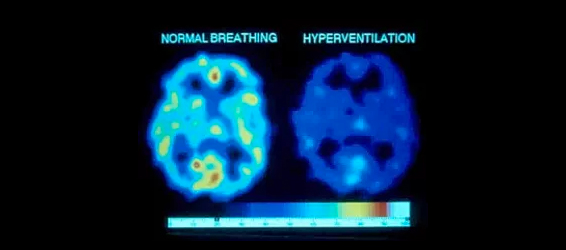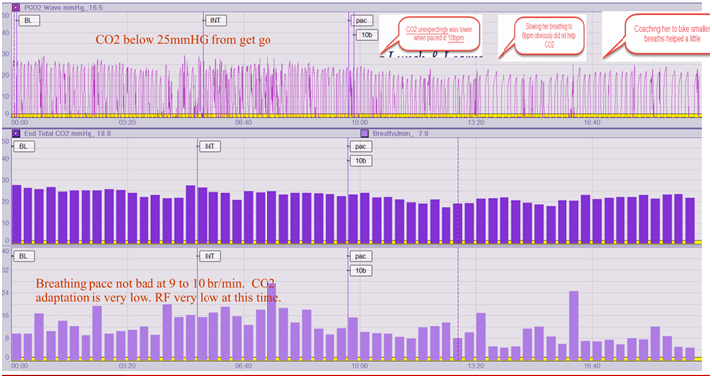At some point in our life, most of us have been given the advice of “just breathe deeply”. Well intended family, friends, counselors and therapists offer deep breathing as a tool to combat anxiety or nervousness before a big event. Yes, one or two deep breaths can give us a sense of control, but unless one has excellent physiology, exceeding just a few deep breaths often results in over-breathing. There are two reasons that over-breathing will actually reduce oxygen delivery to organs and tissues in need.
First, heavy exhalations reduce CO2 in the lungs and in the bloodstream. Bohr’s law shows that inadequate CO2 increases hemoglobin’s affinity for oxygen. Hence deep breathing builds oxygen in the circulatory system, but it will not be released to the muscles, tissues and organs in need without adequate CO2on the hemoglobin.
Second, over-breathing raises pH and reduces nitric oxide… both of which contribute to vasoconstriction of the blood vessels. Hence there is less blood flow to the organs and tissues in n need.
When measuring with capnometry equipment we find that many individuals- kids, teens and adults alike, walk around with PaCO2 levels 5 to 15mmHG below ideal. Below the ideal threshold of 40mmHg of arterial carbon dioxide, for every one (1) mmHg decrease of CO2 in the bloodstream, there is a 2% decrease in oxygen released. This equates to a 10 to 30% decrease in oxygen to their brain! Parents who think their kids have ADHD should consider having their breathing checked prior to jumping on the stimulant bandwagon.



